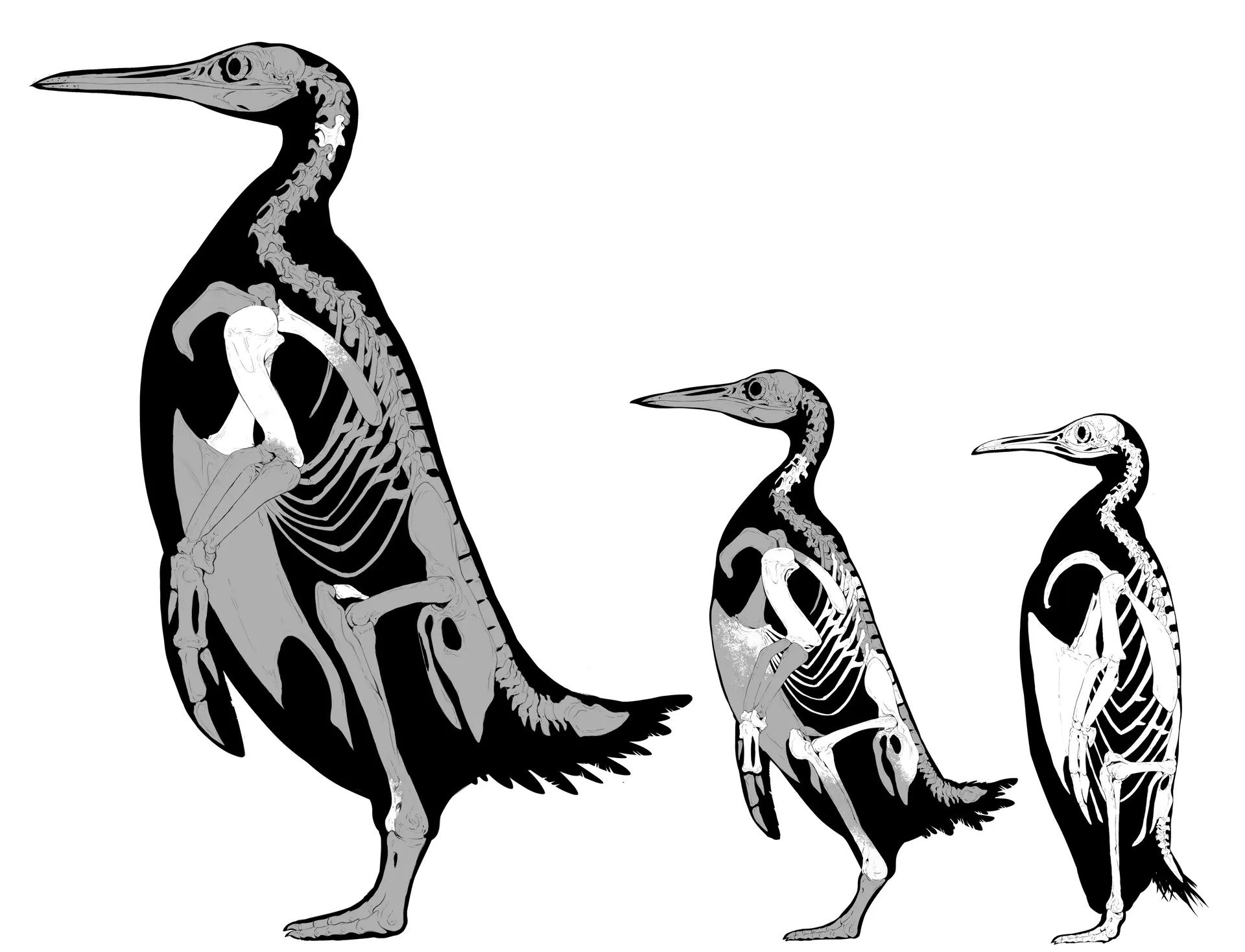
An international team of researchers has found the fossilized remains of the largest-known penguin on Earth. The newfound species is thought to have weighed about 340 pounds (154 kg). This is over three times heavier than the largest living species, the emperor penguin. The record previously belonged to a 256-pound (116 kg) penguin that lived in Antarctica about 37 million years ago.
The giant species, named Kumimanu fordycei (K. fordycei), was unearthed on New Zealand's South Island in 2016. The team, led by Dr. Daniel Ksepka at the Bruce Museum in Greenwich, Connecticut, also found fossils of eight other penguins in the same area. Five belong to another new species, named Petradyptes stonehousei (P. stonehousei). This penguin is believed to have weighed about 110 pounds (49 kg).
Both penguins had slender flipper bones. They were similar to those of birds that could fly and swim. However, the researchers believe neither penguin could fly. Since the skeletons were incomplete, the scientists could not accurately determine the height of the two species.

The flightless birds lived between 55 and 60 million years ago. This was around the time when an asteroid killed the dinosaurs and most marine reptiles. Since the ancestors of seals and whales still lived on land, there was plenty of food in the oceans, allowing the penguins to grow.
Dr. Ksepka thinks the penguins' larger size helped them conserve heat in cold waters. This may have made it possible for them to migrate from New Zealand to other parts of the world. It also kept away predators.
"If you're a little one-pound penguin, a gull can just rip your head off," he said. "But a 300-pound penguin is not going to worry about a seagull landing near it because it would just crush it."
The giant penguins disappeared about 27 million years ago. Ksepka and his team speculate that the increasing marine mammal population may have outcompeted them for food.
The scientists published their findings in the Journal of Paleontology on February 8, 2023. They believe the two new species were probably some of the first ancient penguins. They may provide insights into how the flightless birds evolved over time.
Resources: Livescience.com, NewAtlas.com, cam.ac.uk
